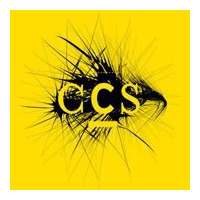What do they do?
Prepare wiring diagrams, circuit board assembly diagrams, and layout drawings used for the manufacture, installation, or repair of electrical equipment.
Also known as:
Computer-Aided Design Operator, Computer-Aided Design Technician (CAD Tech), Computer-Aided Drafting and Design Operator, Design Drafter, Designer, Distribution Designer, Drafter, Drafting Technician (Drafting Tech), Electrical Designer, Electrical Drafter, Engineering Agent, Layout Designer, Line Staker, Mask Designer, Printed Circuit Board Designer (PCB Designer), Printed Circuit Designer, Staking Engineer, Staking Technician (Staking Tech)
-
1.3%
Change
Ranks #42 in job growth rate70Job Openings
Ranks #11 in net job growth
-
College for Creative Studies
Detroit, MI
-
Texas A&M University-College Station
College Station, TX
-
Purdue University-Main Campus
West Lafayette, IN
-
Pennsylvania State University-Penn State Altoona
Altoona, PA
-
Rochester Institute of Technology
Rochester, NY
Looking for colleges that offer a specific major? Use the College Match Tool to find your best-matched schools and discover your estimated Net Price!
- Doctorate or Professional Degree (1%)
- Master's degree (4%)
- Bachelor's degree (23%)
- Associate's degree (35%)
- Some college, no degree (23%)
- High school diploma equivalent (12%)
- Less than high school diploma (2%)
People in this career often have these skills:
- Active Listening - Giving full attention to what other people are saying, taking time to understand the points being made, asking questions as appropriate, and not interrupting at inappropriate times.
- Writing - Communicating effectively in writing as appropriate for the needs of the audience.
- Critical Thinking - Using logic and reasoning to identify the strengths and weaknesses of alternative solutions, conclusions, or approaches to problems.
- Judgment and Decision Making - Considering the relative costs and benefits of potential actions to choose the most appropriate one.
- Reading Comprehension - Understanding written sentences and paragraphs in work-related documents.
- Complex Problem Solving - Identifying complex problems and reviewing related information to develop and evaluate options and implement solutions.
People in this career often know a lot about:
- Design - Knowledge of design techniques, tools, and principles involved in production of precision technical plans, blueprints, drawings, and models.
- Engineering and Technology - Knowledge of the practical application of engineering science and technology. This includes applying principles, techniques, procedures, and equipment to the design and production of various goods and services.
- Computers and Electronics - Knowledge of circuit boards, processors, chips, electronic equipment, and computer hardware and software, including applications and programming.
- English Language - Knowledge of the structure and content of the English language including the meaning and spelling of words, rules of composition, and grammar.
- Mathematics - Knowledge of arithmetic, algebra, geometry, calculus, statistics, and their applications.
- Administrative - Knowledge of administrative and office procedures and systems such as word processing, managing files and records, stenography and transcription, designing forms, and workplace terminology.
People in this career often have talent in:
- Written Comprehension - The ability to read and understand information and ideas presented in writing.
- Oral Comprehension - The ability to listen to and understand information and ideas presented through spoken words and sentences.
- Near Vision - The ability to see details at close range (within a few feet of the observer).
- Oral Expression - The ability to communicate information and ideas in speaking so others will understand.
- Written Expression - The ability to communicate information and ideas in writing so others will understand.
- Visualization - The ability to imagine how something will look after it is moved around or when its parts are moved or rearranged.
- Speech Recognition - The ability to identify and understand the speech of another person.
- Problem Sensitivity - The ability to tell when something is wrong or is likely to go wrong. It does not involve solving the problem, only recognizing that there is a problem.
- Information Ordering - The ability to arrange things or actions in a certain order or pattern according to a specific rule or set of rules (e.g., patterns of numbers, letters, words, pictures, mathematical operations).
People in this career often do these activities:
- Create schematic drawings for electronics.
- Create electrical schematics.
- Document technical design details.
- Evaluate designs or specifications to ensure quality.
- Confer with technical personnel to prepare designs or operational plans.
- Confer with other personnel to resolve design or operational problems.
- Collect data about project sites.
- Design electrical equipment or systems.
- Review technical documents to plan work.
- Operate computer systems.
- Verify mathematical calculations.
- Operate digital imaging equipment.
- Prepare detailed work plans.
- Explain engineering drawings, specifications, or other technical information.
- Select tools, equipment, or technologies for use in operations or projects.
- Prepare technical reports for internal use.
- Supervise engineering or other technical personnel.
- Train personnel on proper operational procedures.
This page includes data from:

 Occupation statistics: USDOL U.S. Bureau of Labor Statistics Occupational Employment Statistics
Occupation statistics: USDOL U.S. Bureau of Labor Statistics Occupational Employment Statistics









